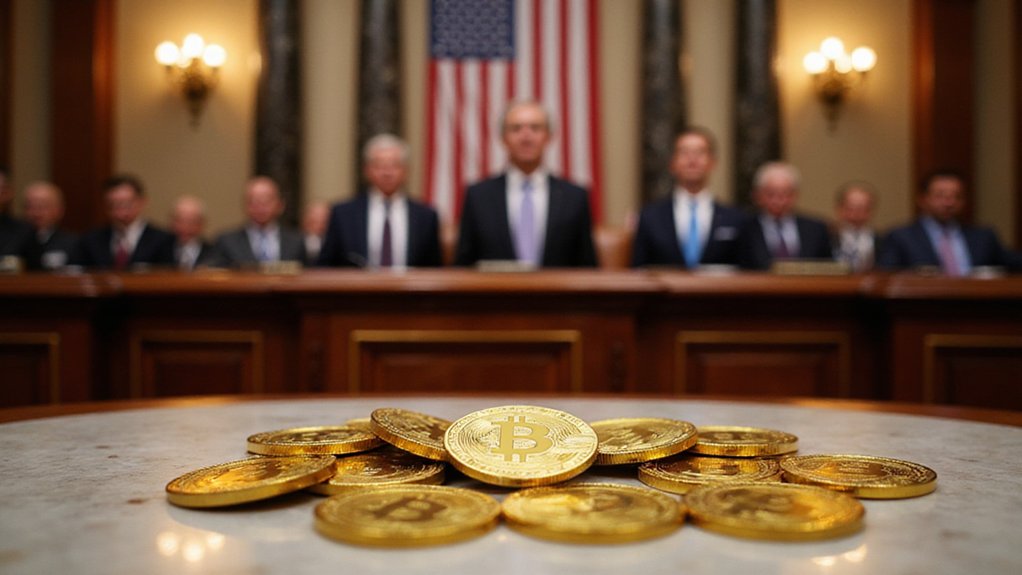While most revolutionary technologies emerge from corporate boardrooms or government laboratories, cryptocurrency began its improbable journey in the shadowy corners of cryptographic research, where brilliant minds pondered the seemingly impossible: creating money from mathematics.
Unlike traditional innovations born in corporate suites, cryptocurrency emerged from cryptographic shadows where mathematicians dared to transform numbers into money.
David Chaum’s 1983 ecash concept proved prophetic, establishing the foundational principle that digital currency could exist without traditional intermediaries—a notion that would have seemed absurd to banking executives of the era. His DigiCash implementation in 1995, alongside the NSA’s 1996 anonymous electronic cash paper, created the intellectual scaffolding upon which future innovations would rest. Wei Dai’s “b-money” proposal in 1998 and Nick Szabo’s “bit gold” concept further refined these ideas, incorporating proof-of-work mechanisms that would become cryptocurrency’s beating heart.
When Satoshi Nakamoto launched Bitcoin in 2009, the cryptocurrency ecosystem consisted primarily of cryptographic enthusiasts mining coins on personal computers—a quaint image considering Bitcoin’s eventual $1 billion market valuation by 2013. The New Liberty Standard’s early pricing methodology, based on electricity costs rather than market dynamics, inadvertently established a precedent for linking cryptocurrency value to computational resources. The legendary first Bitcoin transaction demonstrated real-world utility when 10,000 BTC purchased two pizzas, establishing cryptocurrency’s practical monetary value.
The regulatory response proved predictably chaotic, with countries like China and Thailand implementing outright bans while authorities scrambled to understand what they were attempting to regulate. The Mt. Gox seizure and Silk Road shutdown demonstrated governments’ willingness to act decisively, even when operating from incomplete understanding. The European Union’s recent MiCA regulation framework, which entered into force on June 29, 2023, represents a significant shift toward comprehensive crypto oversight across member states.
Vitalik Buterin’s 2014 Ethereum white paper fundamentally expanded cryptocurrency’s potential beyond mere currency, introducing smart contracts and decentralized applications that would spawn entire industries. The subsequent explosion of alternative cryptocurrencies—employing various consensus mechanisms from Litecoin’s scrypt hashing to Peercoin’s hybrid approach—transformed crypto from singular experiment into diverse ecosystem. By June 2023, over 25,000 cryptocurrencies had emerged, demonstrating the explosive growth and diversification of the digital asset landscape.
The shift from niche technical curiosity to mainstream investment vehicle brought institutional capital alongside retail speculation, creating the boom-bust cycles that characterize modern crypto markets. DeFi protocols challenged traditional finance models while NFTs demonstrated blockchain’s capacity for digital asset ownership—developments that would have seemed fantastical to early adopters.
Today’s regulatory landscape reflects this evolution, with governments worldwide attempting to balance innovation promotion with risk mitigation, recognizing that cryptocurrency’s wild journey has only just begun.









